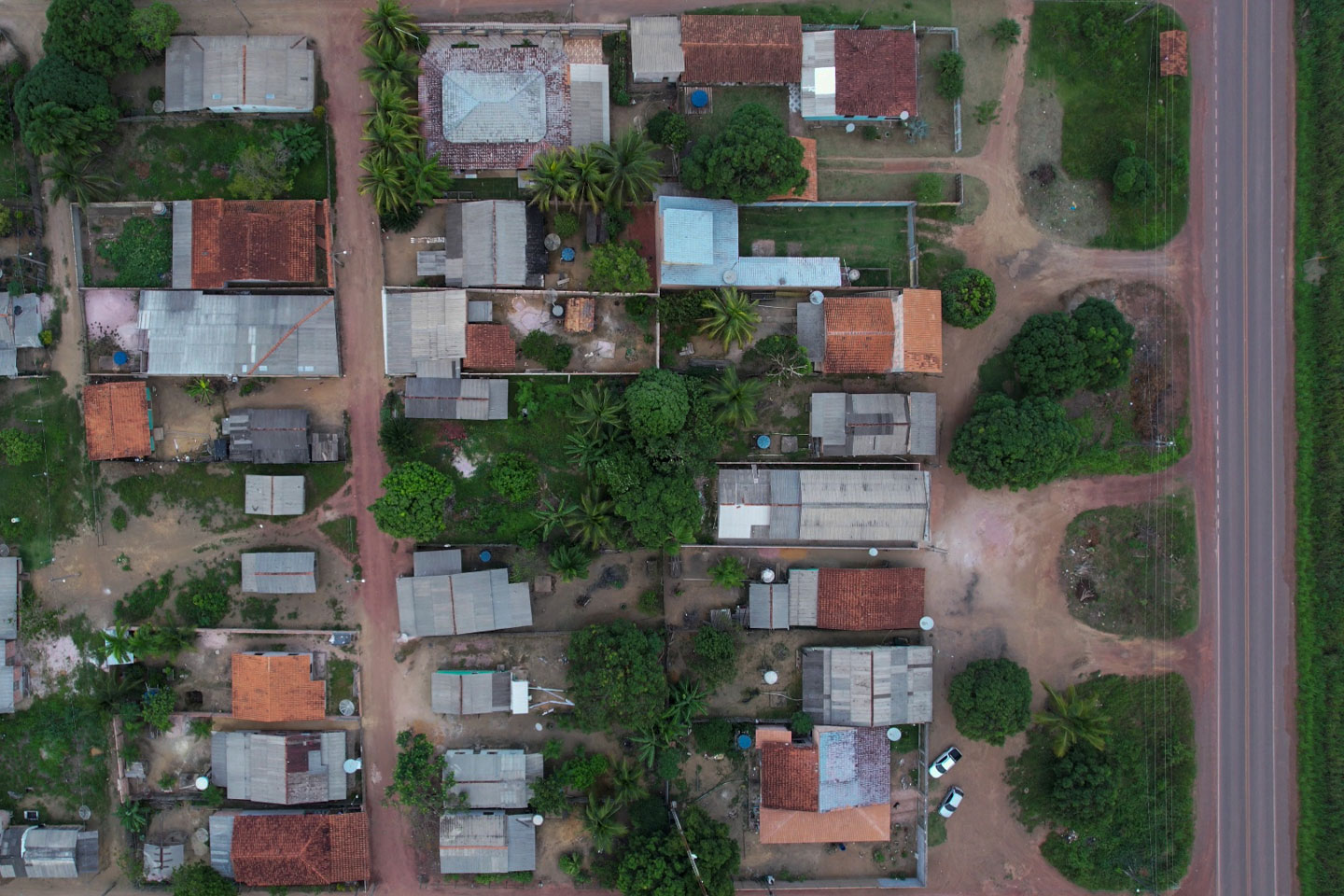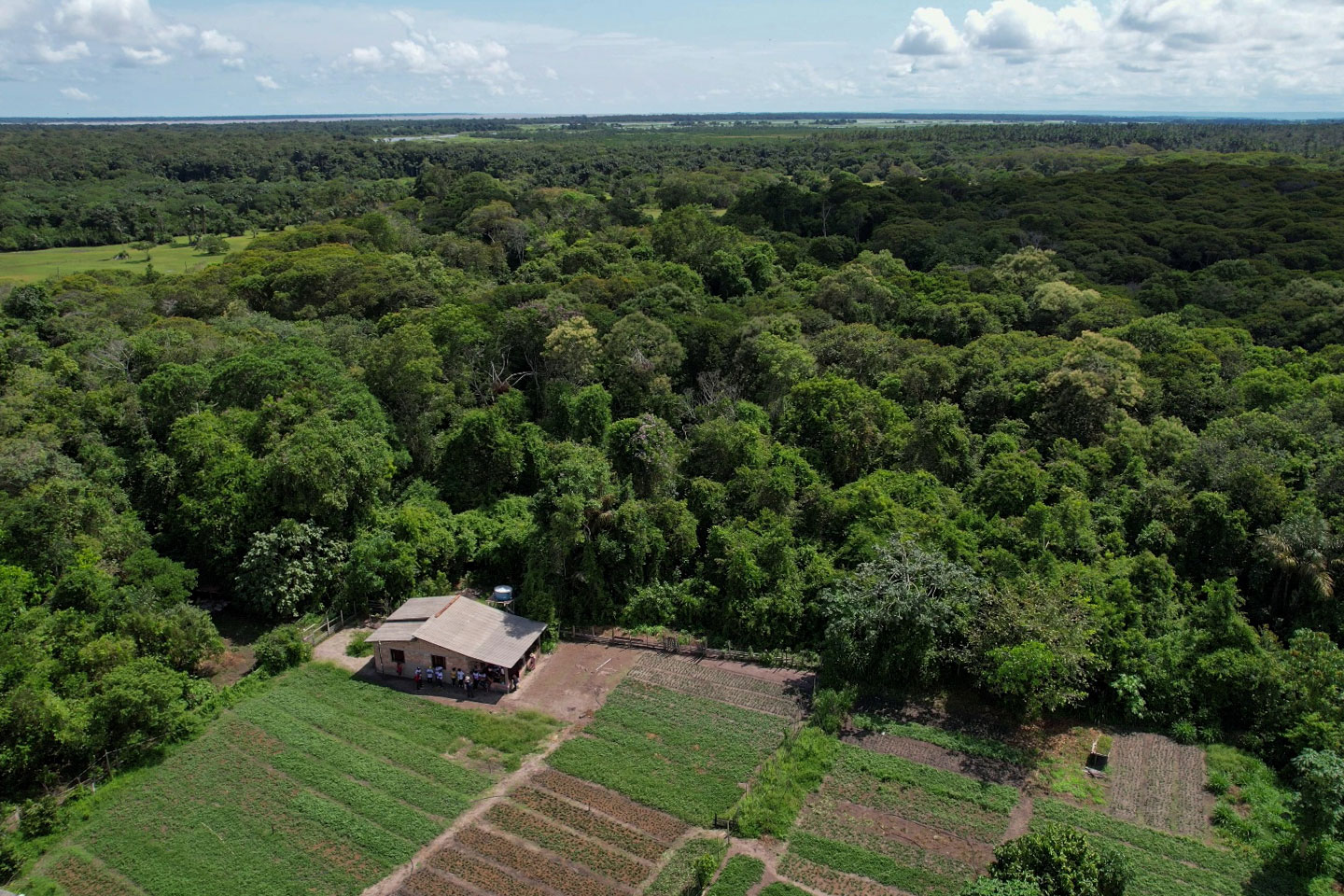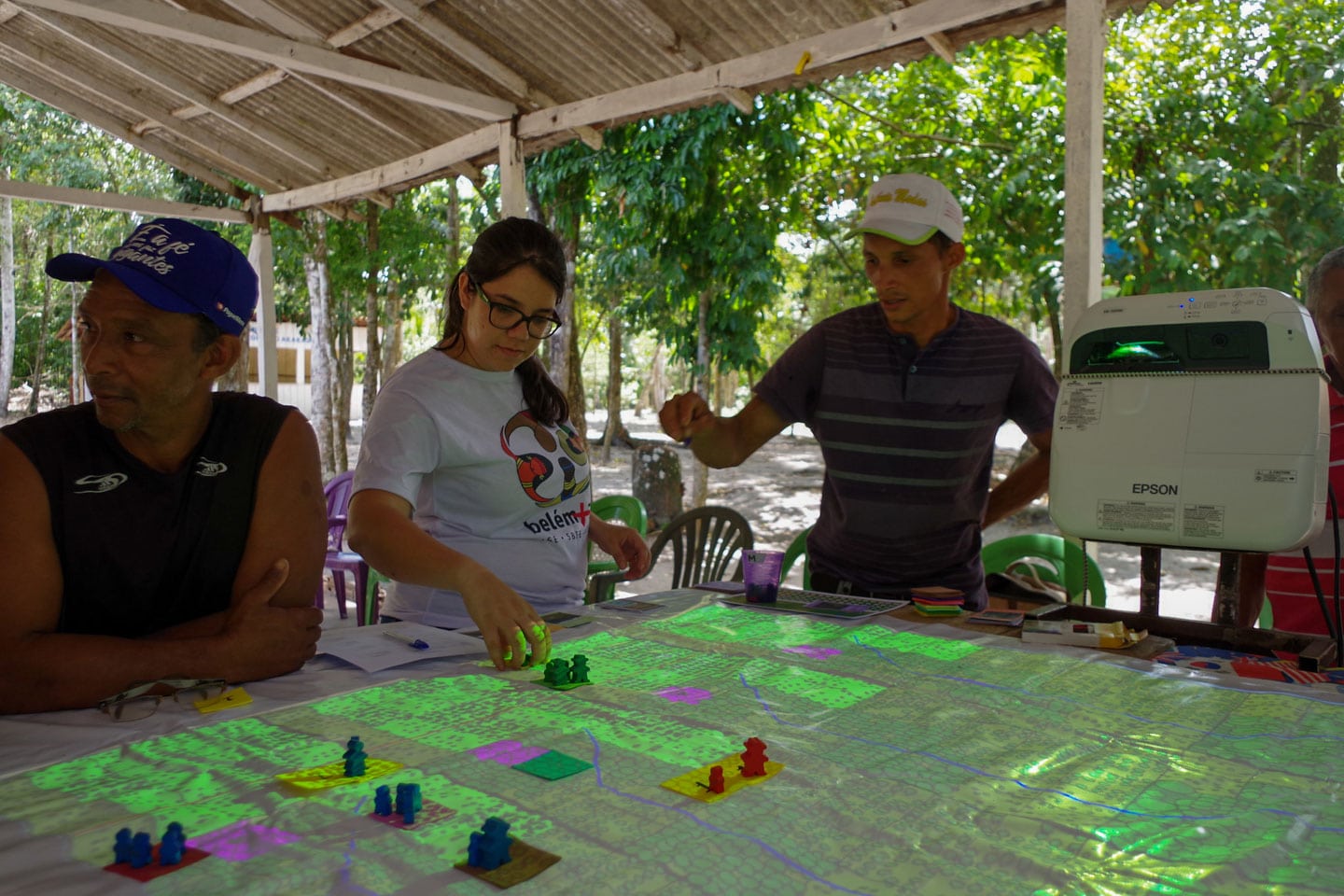© Emilie Coudel
ORIGIN AND MEANING OF THE ACCOMPANIMENT CONCEPT
“to go with as an associate or companion” is the first definition in the Merriam-Webster dictionary for the word “accompany”. In the Cambridge Dictionary, the definition is “to go with”. These definitions help shed light on the concept of research accompaniment (or simply accompaniment) which has, in the social sciences, been consolidating as the process by which the researcher “goes together” with social protagonists, not with the intention of changing the way in which they think and act, but to “be together” with them in their projects with an eye to empowering the subject (Beauvais & Haudiquet, 2012).
This proposal is heir to a new paradigm outlined at the end of the 1970s and strengthened at the start of the 2000s, in which social actors are recognized as true protagonists in research (Cash et al., 2003). It is in this context that the concept of accompaniment emerged in the 2010s, which then was applied in various environments such as management sciences (Bréchet et al., 2014), in the area of socioeducation (Beauvais & Haudiquet, 2012), social geography (D’Aquino, 2002; Piraux, 2021) and in socioenvironmental modeling (Barreteau et al., 2003).

© Vincent Bonnal
While it does have ties to other concepts such as action research and intervention research, accompaniment has its own space, different because it presupposes no intervention by the researcher—at least not in the sense of a pre-defined action. Accompaniment seeks to go beyond a mere view of assistance, extension or transference of knowledge. The idea is that the action or intervention be triggered by the social actors themselves starting with interactions with the researchers through permanent communication (Freire, 1968), co-idealization and co-building processes (Beauvais & Haudiquet, 2012). In short, it is a research partnership in which social actors and researchers work together.
It is post-normal science, meaning an approach for dealing with issues where there is uncertainty, values under debate, elevated risk and an urgent need for decision making (Funtowicz & Ravetz, 1993). It rests on complexity theories (Morin, 2001), constructivism (Le Moigne, 1995) and education as a practice for emancipation and awareness (Freire, 1996).Therefore in accompaniment, complex problems are dealt with that cannot be solved only with the knowledge of specialists. There is a need to ally this knowledge with the knowledge, skills and experiences of other people whose perceptions of the world are different.

© Vincent Bonnal

© Krishna Naudin
Accompaniment does not pre-suppose a pre-defined methodology. The only requirement is that the accompanying researcher (or multidisciplinary team of accompanying researchers) be predisposed to support the dynamic of the social stakeholders. The person accompanying should be empathetic and able to relate to his or her own emotions and the emotions of others, in other words, possess that which Goleman called emotional intelligence (Goleman, 2018). This posture gives room for plurality of viewpoints and construction of an environment favorable to learning, confidence, experimentation and co-building. It is here that people gain autonomy and make enlightened decisions in order to reach their objectives.
“Accompaniment is a process that aims to facilitate learning, reinforcing the individuals’ capacities to produce change” (Piraux, 2021).
Instead of guiding decision making, the accompanying person creates the conditions so that the rest of the participants may emancipate themselves and independently define the actions that make the most sense (d’Aquino, 2002). In addition to establishing this quality dialogue, the accompanying researchers evaluate the process permanently so as to allow for adjustments and adaptations. Transposing these ideas to the reality of rural territories, we have the possibility of monitoring the space and bolstering the capacity for innovation. (Piraux, 2021). The territories in question face multidimensional challenges including deforestation, loss of biodiversity, pollution and drought. They are issues involving many involved parties. It is a scenario in which Accompaniment can be very useful. When the local parties sit down together at the same table, the accompanying researcher establishes a sort of living laboratory where new governance models can be tested. He enables the social players to take advantage of the territory’s political, institutional and identification dimensions in an autonomous and qualified manner (D’Aquino, 2002).

© Krishna Naudin
Another of accompaniment’s characteristics is that it draws people into the dialogue who would normally be marginalized and not given a voice in decision making processes. They are enabled to take ownership of governance rules, to enter the debate and participate in decision making, resulting in a change in power relations (Piraux, 2021).
They gain this power through dialogue, interaction and cooperation with other parties (D’Aquino, 2002). It is accompaniment’s essence to support this cooperation in the deepest and most explicit way possible (D’Aquino, 2002), identifying points of intersection between different interests (Ruault, 1996). Still, this is a process that is undergone not by decree by rather by means of gradual learning. People working with social issues need to feel increasingly that their knowledge is legitimate both in their own eyes as well in the eyes of the other people engaged in the process. Different tools are used in accompaniment to clarify points of view and serve as a basis for cooperation. These tools include maps, plans of action, videos and models. Their role is not to propose an already-made decision, but to subsidize the process of continual negotiation, to stimulate debate and allow for the best decisions to be made. Over the last 20 years, a research model called Companion Modeling (ComMod) has also emerged in which a certain social ecosystem is represented through games or simulations with multiple parties. Manipulating the models means that participants dialogue, build mutual understanding and reflect on the consequences of their actions, leading to better evaluation of complex phenomena (Le Page, 2017).
Accompaniment encourages participants to take part in prospective exercises to help them forge a new vision for the future, clarify their objectives and in thus doing, direct the collective action. This allows them to understand the transformations underway and find tools to create the scenario they desire (D’Aquino, 2002).
WHAT TERRITORIAL ACCOMPANIMENT CAN DO FOR AMAZONIA
Brazil’s largest biome, Amazonia is facing great challenges: deforestation and damage to the environment, demands from productive chains, poverty, the need to generate income with quality products, consolidation of local institutions and strategic planning, respect for traditional populations, preservation and valorization of biodiversity, a lack of urban planning and infrastructure, the risks caused by the mining industry and the innumerous illegal activities currently underway.
The territorial sphere is especially strategic in dealing with these challenges, as it allows for involvement of people seeking the best solutions for themselves and the place they live. Territorial management is, from this perspective, complimentary to larger-scale management on the State and Federal level.
This means that access to quality information is fundamental. But in Amazonia, articulation between information sources is lacking on the territorial level. In addition, defined stages of knowledge production based on the available information are still lacking, and data rarely combined with local knowledge and expertise in the field, which then results in mistaken diagnoses and unsuitable proposals.
In this context, scientific institutions have an important role to play together with stakeholders in Amazonian territories in accompanying them in the production of useful and useable information. This is why the Territorial Accompaniment approach has been consolidated since the 2010s in the context of various partnerships between Brazilian and French scientific institutions. These partnerships have existed in Amazonia since the 1980s and have become increasingly focused on territory management and the involvement of stakeholders in the studies performed. Today, this approach is developed by a network of professional teams from different institutions.

© René Poccard-Chapuis
References
– Barreteau, O., M. Antona, P. D’Aquino, S. Aubert, S. Boissau, F. Bousquet, … J. Weber, 2003, Our Companion Modelling Approach, Journal of Artificial Societies and Social Simulation, vol. 6, n°2.
– Beauvais, M., A. Haudiquet, 2012, La recherche-accompagnement : des postures en retrait pour des visées autonomisantes, Pensée plurielle, vol. n° 30-31, n°2, p. 165.
– Bréchet, J., S. Émin, N. Schieb-Bienfait, 2014, La recherche-accompagnement : une pratique légitime, Finance Contrôle Stratégie, vol. 17, n°2.
– Cash, D. W., W. C. Clark, F. Alcock, N. M. Dickson, N. Eckley, D. H. Guston, … R. B. Mitchell, 2003, Knowledge systems for sustainable development, Proceedings of the National Academy of Sciences of the United States of America, vol. 100, n°14, p. 8086-8091.
– D’Aquino, P. Accompagner une maîtrise ascendante des territoires: prémices d’une géographie de l’action territoriale. HDR Université de Provence, 2002.
– Freire, P., 1968, Extensão ou comunicação?, Paz e Terra, Rio de Janeiro, 93 p.
– Freire, P., 1996, Pedagogia da Autonomia. Saberes Necessários à Prática Educativa, Coleção Leitura, Paz e Terra, São Paulo, 148 p.
– Funtowicz, S. O., J. R. Ravetz, 1993, Science for the post-normal age, Futures, vol. 25, n°7, p. 739-755.
– Goleman, D. 2018. L’intelligence émotionnelle – Tome 2: Cultiver ses émotions pour s’épanouir dans son travail – Robert Laffont.
– Le Moigne, J.L. 1995, Les épistémologies constructivistes, PUF, Paris.
– Le Page, C. Simulation multi-agent interactive: engager des populations locales dans la modélisation des socio-écosystèmes pour stimuler l’apprentissage social. HDR CIRAD-GREEN, 2017.
– Morin, E. (2001). Os desafios da complexidade. Morin E, organizador. A religação dos saberes. O desafio do século XXI. Rio de Janeiro: Editora Bertrand Brasil, 559-67.
– Piraux, M. Evaluer et accompagner les dispositifs de gouvernance territoriale: vers une gouvernance territoriale collaborative. Une réflexion à partir du cas brésilien. HDR Université Paul Valéry, 2021.
– Ruault C. , 1996. L’invention collective de l’action. Initiatives de groupes d’agriculteurs et développement local. 256 p., L’Harmattan, Paris (FRA).



